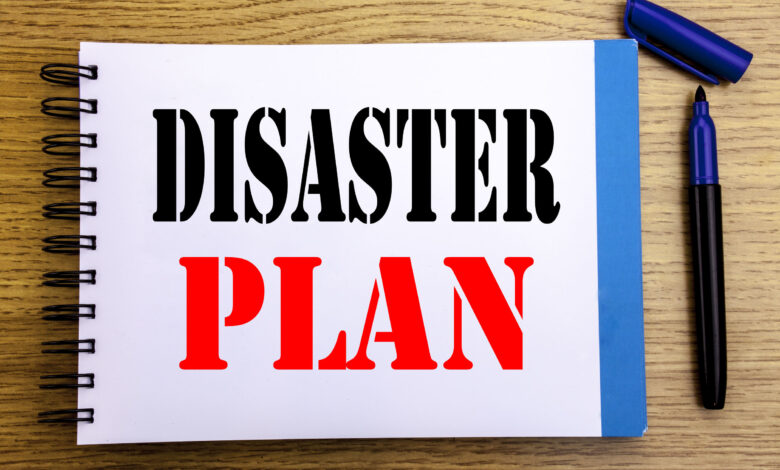A Guide to Disaster Recovery Planning for Small Enterprises

Small businesses nowadays deal with different problems like hackers, bad weather, and computer attacks. It’s important for them to have a good plan to keep going if something bad happens. This guide talks about why it’s important for small businesses to have a plan for when things go wrong. It also gives some easy steps to make a good plan that works.
Small businesses have to deal with a lot of problems these days. From hackers to bad weather, there are many things that can go wrong. That’s why it’s so important for them to have a plan in place to keep things running smoothly. This guide explains why having a disaster recovery plan is so important for small businesses and gives some simple steps to make one.
Small businesses have to be ready for anything that might happen. That’s why it’s important for them to have a plan in case something goes wrong.
Understanding Disaster Recovery Planning
Disaster recovery planning means getting ready for bad things that might happen and finding ways to deal with them. It’s important for small businesses to plan ahead because they might not have as much money or tools as big companies. By looking for weak spots, deciding what’s most important, and setting goals for getting back on track, small businesses can make a plan that fits their needs.
When businesses make a disaster recovery plan, they’re thinking about what could go wrong and how to fix it. For small businesses, this is really important because they might not have as many resources as bigger ones. By finding out where they might be vulnerable, deciding what’s most important to protect, and setting goals for getting back to normal, small businesses can make a plan that’s just right for them.
Disaster recovery planning is all about being ready for the worst. Small businesses need to plan ahead because they might not have as much money or equipment as bigger ones. By finding out what could go wrong, deciding what needs to be protected the most, and setting goals for getting back to business, small businesses can make a plan that works for them.
Key Components of Disaster Recovery Planning:
Risk Assessment
Small enterprises should start by conducting a thorough assessment of potential risks, including cybersecurity threats, natural disasters, and system failures. By identifying vulnerabilities and understanding the potential impact of different scenarios, businesses can develop targeted strategies to mitigate risks and protect their assets.
Data Backup and Recovery
Implementing a robust data backup and recovery strategy is essential for small enterprises to safeguard critical information. Utilizing cloud-based backup solutions provides secure and off-site storage, ensuring that data remains accessible even in the event of a physical disaster or cyberattack.
Business Continuity Plan
Developing a comprehensive business continuity plan is essential for small enterprises to maintain essential functions during and after a disaster. This plan should outline procedures for maintaining operations, defining roles and responsibilities, establishing communication channels, and designating alternate work locations if necessary.
Data Loss Prevention
Data Loss Prevention measures are crucial aspects of any disaster recovery plan for small enterprises. These measures focus on preventing the loss of critical data, which is essential for business continuity and maintaining operations during and after a disaster. Small enterprises can implement various strategies such as regular data backups, encryption, access controls, and monitoring to reduce the risk of data loss. By prioritizing data loss prevention as part of their disaster recovery plan, small enterprises can ensure the integrity and availability of their data, minimizing the impact of disruptions and enabling swift recovery in the face of adversity.
Testing and Training
Regular testing and training exercises are critical to ensuring the effectiveness of the disaster recovery plan. By conducting drills and simulations, small businesses can identify weaknesses and areas for improvement, while providing employees with the knowledge and skills they need to respond effectively in an emergency.
Vendor and Supplier Communication
Maintaining open communication with vendors and suppliers is essential for small enterprises to ensure continuity of supply chains and support services during a disaster. Establishing relationships with alternate suppliers and service providers can help mitigate disruptions and minimize downtime in the event of a crisis.
Implementing Disaster Recovery Planning
Assessing Risks
Identifying potential risks is the first step for small enterprises in disaster recovery planning. They need to look closely at what could go wrong, like cyberattacks or natural disasters. By understanding these risks, small businesses can better prepare to face them. This involves looking at their systems, processes, and physical environment to find any vulnerabilities that could be exploited.
Developing the Plan
Once small enterprises know what risks they face, they can create a detailed plan to deal with them. This plan should cover everything from how to back up important data to what to do if there’s a power outage. By laying out these procedures in advance, small businesses can respond quickly and effectively in an emergency. This includes ensuring that everyone knows their role and what steps to take to keep the business running smoothly.
Testing and Training
Regular testing and training are essential to make sure the disaster recovery plan works when it’s needed. Small enterprises should conduct drills and exercises to simulate different scenarios and see how well their plan holds up. This helps identify any weaknesses or gaps that need to be addressed. Additionally, providing ongoing training to employees ensures they are prepared to handle emergencies and follow the procedures outlined in the plan.
Review and Update
Disaster recovery planning is not a one-time task; it’s an ongoing process. Small enterprises need to regularly review and update their plan to keep it relevant and effective. This means staying informed about new threats and changes in the business environment and adjusting the plan accordingly. By staying proactive and adaptable, small businesses can ensure that their disaster recovery plan remains robust and continues to meet their needs.
In Summary
Investing in disaster recovery planning is a critical step for small enterprises to safeguard their business against potential threats and uncertainties. By proactively addressing risks and developing a robust disaster recovery plan, small businesses can protect their valuable assets and maintain continuity in the event of a crisis. With a tailored approach that considers their unique needs and challenges, small enterprises can enhance resilience and position themselves for success in today’s dynamic business landscape.
Taking proactive steps to implement a comprehensive disaster recovery plan demonstrates a commitment to resilience and preparedness. Small enterprises that prioritize disaster recovery planning can minimize the impact of disruptions, ensuring that their operations continue smoothly even in challenging circumstances. By investing in the right strategies and resources, small businesses can navigate uncertainties with confidence and emerge stronger from any adversity they may face.




